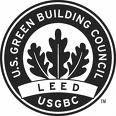Autumn Lawn Care Basics
- Fall is a great time for new grass seed to take root, so consider reseeding in selected areas. Reseeding also eliminates areas for weeds to grow in the spring. Fertilize your lawn one more time with a high nitrogen fertilizer to encourage root growth. Look for a lawn fertilizer labeled “winterizing.”
- It’s also a good idea to rake leaves and debris off your lawn in the fall. Put some muscle into it and rake out any areas where heavy thatch has built up.
- Cut your lawn one last time after it has stopped growing, but before the first snow. Adjust your mower setting to cut your lawn to about one inch. Lawn care experts suggest doing the final mowing with a bagger to pick up cut grass, stray leaves and other debris. It also leaves fewer places for Snowmold to develop.
- According to gardenersnet.com, snowmold is one of the most common lawn diseases and typically it shows up in the spring. As the snow melts, it uncovers a lawn that has spent several months hidden under a cold blanket of white, with little air and no sun. In its cold, wet, and dark environment, Snowmold slowly forms, leaving blades of grass dead and brown. New grasses will sprout up behind it, but unless you vigorously rake it away, the new growth will be slow and thin — so it’s a good idea to overseed.
- It also may be wise to aerate your lawn. According to Homestore.com, aerating your lawn is a great way to reduce thatch, loosen up compacted soils and pave the way for water and nutrients to reach the roots of your grass.
- Even with meticulous care, lawns can thin out and lose color due to excessive thatch buildup, hard or compacted soils, or periods of high temperature, high humidity, or drought. According to The Lawn Institute, more than two-thirds of American lawns are growing on compacted soils. These soils slowly reduce the amount of oxygen contained in the soil, thus retarding the penetration of both water and nutrients. Aerating and overseeding is recognized by experts as the best treatment to control thatch, reduce compaction, fill-in bare spots and revitalize growth.
Here are a few tips from lawnboy.com to help you determine if you should aerate annually:
•If your lawn is more than seven years old, and rests on mostly clay soil.
•If your lawn is moderately to heavily used (walked or played on).
•If water collects on your lawn.
While lawn care is a hot maintenance item for home owners who value “curb appeal” or just want to escape the ire of neighborhood community associations, don’t forget there are plenty of other maintenance chores. Here’s a checklist of items you should address before the winter holiday season.
Exterior Tasks
1.Maintain your gutters.
Remove all debris from your gutters so water can properly drain. This minimizes standing water and slows the freeze/thaw expansion process that occurs in cold weather. Clogged gutters can cause landscaping, lawn and shrubbery, walls, foundation, basement, crawl spaces and existing gutter system damage. Consider installing “gutter guards,” which will prevent debris from entering the gutter and direct the flow of water away from the house and into the ground.
2.Trim your trees and remove dead branches.
Inclement weather can cause weak trees or branches to break and damage your home, car, utility lines or someone walking on your property. Keep an eye out for large dead branches in trees; detached branches hanging in trees; cavities or rotten wood along trunks or major branches; mushrooms at the base of trees; cracks or splits in trunks; leaves that prematurely develop unusual color or size; and trees that were previously topped or heavily pruned. If you see any signs of hazards, call a professional tree service.
3.Maintain your steps and handrails.
Repair broken stairs and banisters to prevent falls and injury.
4.Inspect your roof.
Be proactive and prevent emergency and expensive repairs. Things to look for include damaged or loose shingles; gaps in the flashing where the roofing and siding meet vents and flues; and damaged mortar around the chimney (especially at the joints, caps and washes). If you see any signs of damage, call a professional to repair the damage.
5.Inspect your home’s exterior walls.
Look for possible weather-related damage, like cracks and loose or crumbling mortar. Wood trim and siding can suffer from deteriorating paint or become loose. Windowsills may be cracked, split or decayed.
Indoor Chores
1.Check your home’s insulation.
Your attic should be five to 10 degrees warmer than the outside air, otherwise too much heat escapes and causes frozen water to melt and refreeze which can result in a collapsed roof. Don’t neglect your basement and crawl spaces, and well insulate pipes in those spaces to protect against freezing.
2.Maintain your pipes.
Wrap your pipes with heating tape every winter and insulate unfinished rooms such as garages, if they contain exposed pipes. Check pipes for cracks and leaks and have any damage repaired immediately to prevent costlier repairs later. Keep your house warm — at least 65 degrees.
3.Check your heating systems.
Be sure to maintain your furnace, fireplace, boiler, water heater, space heater and wood-burning stove and have your heating system serviced every year. Check smoke and fire alarms and carbon monoxide detectors and change your heating and air conditioning filters regularly.
4.Know your plumbing.
Learn the location of your pipes and how to shut the water off. If your pipes freeze, the quicker you shut off the water, the better chance you have of preventing pipe bursts. Check weather stripping and caulking around windows and doors and replace or repair as needed. Caulking helps keep your house weather-tight, lowers your heating and cooling bills, and can also help keep insects and rodents out of your house. Also look for chipped or peeling paint around window frames and trim. Repair broken glass and loose or missing putty. When needed, use a modern glazing compound instead of putty for a waterproof seal.
5.Clean and vacuum dust from vents, baseboard heaters and cold-air returns.
Dust build-up in ducts is a major cause of indoor pollutants and can increase incidences of cold-weather illnesses. Check all your faucets for leaks and repair any you find. Replace washers if necessary.
By setting aside a few weekend days now, you’ll save yourself from a lot of hassle later. Once your home passes your fall inspection, you and your family can relax and enjoy the coming holidays free from worry about potential home maintenance catastrophes.
Article Courtsey if NAHB http://www.nahb.org/generic.aspx?sectionID=124&genericContentID=125909













